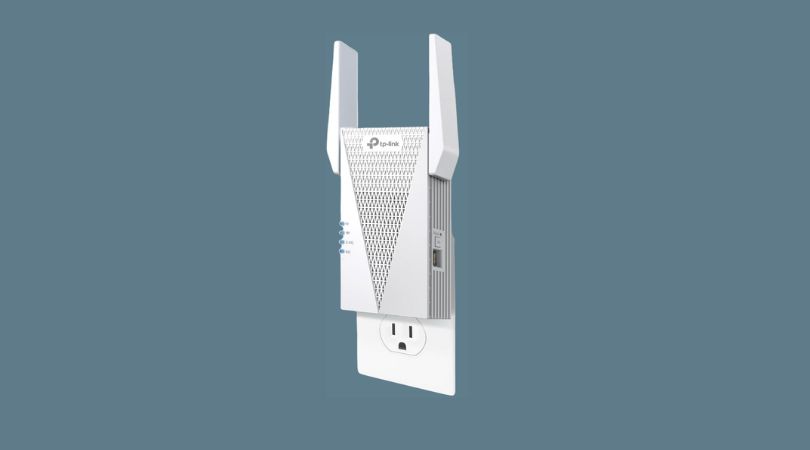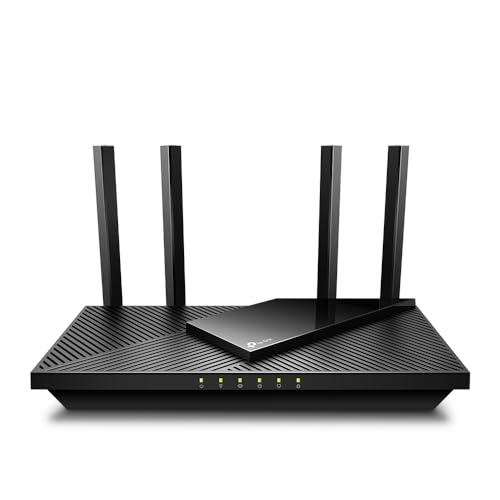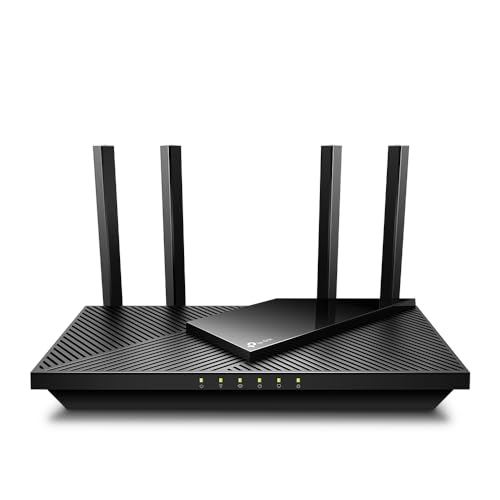Struggling with WiFi dead zones at home or in the office? Wireless repeaters offer a simple solution. These devices pick up your existing WiFi signal and rebroadcast it, helping to extend coverage into areas where the connection is weak or unreliable. By placing a wireless repeater between your router and problem spots, you can enjoy stronger, more consistent internet access throughout your space.
What Are Wireless Repeaters and How Do They Improve WiFi?
Understanding Wireless Repeaters: Definition and Function
Wireless repeaters, also known as WiFi extenders, are networking devices designed to expand the coverage area of a wireless network. These devices receive signals from a primary WiFi router and retransmit them, allowing the wireless network to reach areas where the signal is weak or nonexistent. By bridging the gap between the main router and distant devices, wireless repeaters help eliminate dead zones and provide a more consistent internet experience throughout a space.
How Wireless Repeaters Work
A wireless repeater operates by capturing the existing WiFi signal from your router and broadcasting it again to create a secondary network. This process involves two main steps:
- Signal Reception: The repeater detects and locks onto the WiFi signal from your router within its range.
- Signal Re-Broadcast: The repeater amplifies and transmits the signal, extending the wireless coverage to areas further away from the router.
This process does not require any wired connection between the repeater and the router. Instead, the repeater communicates wirelessly with both the router and the devices connecting to the extended network.
Types of Wireless Repeaters
Wireless repeaters come in various forms, each designed to address specific coverage challenges:
- Single-Band Repeaters: These operate on one frequency band, usually 2.4 GHz. While they offer basic coverage extension, single-band repeaters may experience reduced speeds, especially if many devices are connected.
- Dual-Band Repeaters: These support both 2.4 GHz and 5 GHz bands. Dual-band repeaters can offer better performance by reducing interference and supporting higher data rates.
- Mesh WiFi Extenders: Part of a mesh network system, these repeaters integrate seamlessly with the main router and other nodes. Mesh systems deliver more reliable coverage and smart network management features.
Benefits of Using Wireless Repeaters
- Elimination of Dead Zones: Repeaters help fill coverage gaps in large homes, offices, or multi-story buildings, providing internet access in hard-to-reach areas.
- Improved Signal Strength: By retransmitting the WiFi signal, repeaters boost signal strength in areas where the original router’s signal is weak.
- Cost-Effective Solution: Installing a wireless repeater is usually more affordable than upgrading to a more powerful router or laying Ethernet cables throughout the space.
- Easy Installation: Most repeaters offer plug-and-play setup, often requiring only a few minutes to connect and configure.
- Support for Multiple Devices: Repeaters extend coverage so multiple devices, such as smartphones, laptops, smart TVs, and IoT devices, can connect reliably across the premises.
How Wireless Repeaters Improve WiFi Performance
Wireless repeaters play a significant role in enhancing the overall performance of a WiFi network. Here’s how they make a difference:
1. Extending Coverage Area
The most notable function of a wireless repeater is extending the range of your WiFi network. In large buildings or homes with thick walls, WiFi signals often struggle to reach every corner. Placing a repeater between the router and the area with weak signal ensures that WiFi reaches those distant spots. This expanded coverage supports seamless connectivity for users moving around the space.
2. Boosting Signal Strength in Weak Zones
Rooms far from the router often experience slow internet speeds due to signal loss. Wireless repeaters amplify and retransmit the signal, improving data rates and reducing latency. This is especially important for video streaming, online gaming, and video conferencing, where stable connections are essential.
3. Supporting More Devices Simultaneously
As the number of connected devices in homes and offices increases, network congestion can become a problem. Repeaters help distribute the load by providing additional points of access to the network. This reduces the burden on the main router and helps maintain stable connections for each device.
4. Overcoming Physical Barriers
Physical obstructions such as walls, floors, and furniture can weaken WiFi signals. Wireless repeaters counteract these barriers by retransmitting the signal around or through obstacles, ensuring coverage in challenging environments.
5. Enhancing Outdoor Connectivity
Wireless repeaters are not limited to indoor environments. Placing a repeater near an outdoor area, such as a patio or garden, can extend WiFi coverage outside the home, making it possible to use smart devices, stream music, or work remotely from outdoor spaces.
Placement Strategies for Optimal Performance
Where you place a wireless repeater directly affects its ability to extend and improve your WiFi network. Consider these key strategies for optimal placement:
- Midpoint Placement: Position the repeater halfway between the router and the area needing coverage. This ensures the repeater receives a strong signal to retransmit.
- Avoid Obstructions: Keep the repeater away from thick walls, metal objects, and appliances that may interfere with the signal.
- Elevate When Possible: Placing the repeater on a shelf or higher surface can help broadcast the signal more effectively.
- Monitor Signal Strength: Use the repeater’s signal indicator lights or a WiFi analyzer app to find the best location. The repeater should have at least 50% signal strength from the router.
Key Features to Look for in Wireless Repeaters
When choosing a wireless repeater, consider features that can improve your network performance:
- Dual-Band Support: Devices that support both 2.4 GHz and 5 GHz bands can provide faster speeds and less interference.
- Gigabit Ethernet Port: Some repeaters offer an Ethernet port, allowing you to connect wired devices for faster and more stable connections.
- MU-MIMO Technology: Multi-User, Multiple-Input, Multiple-Output (MU-MIMO) technology enables the repeater to communicate with several devices simultaneously, improving network efficiency.
- Easy Setup: Features like WPS (WiFi Protected Setup) buttons and intuitive mobile apps streamline the installation process.
- Seamless Roaming: Some modern repeaters support seamless roaming, allowing devices to switch between router and repeater without dropping the connection.
Common Challenges and Solutions When Using Wireless Repeaters
While wireless repeaters offer many benefits, users may encounter certain challenges. Here are common issues and their solutions:
- Reduced Bandwidth: Since repeaters need to communicate with both the router and connected devices, they may halve the available bandwidth.
Solution: Opt for dual-band repeaters or mesh systems that minimize this limitation by using dedicated channels for backhaul communication. - Signal Interference: Electronic devices, thick walls, or overlapping networks can cause interference.
Solution: Place the repeater away from sources of interference and use the less congested 5 GHz band if available. - Incorrect Placement: Poor placement can result in weak retransmitted signals.
Solution: Position the repeater within strong signal range of the router and test signal strength before finalizing its location. - Device Compatibility Issues: Older repeaters may not support the latest WiFi standards, leading to compatibility problems.
Solution: Choose repeaters that support the latest WiFi standards (e.g., WiFi 5, WiFi 6) for optimal performance.
Wireless Repeaters vs. Other WiFi Solutions
Wireless repeaters are just one of several options for improving WiFi coverage. Here’s how they compare to other solutions:
- Access Points: Access points connect to the router via Ethernet and create a new WiFi network. While access points provide high-speed connections, they require wired infrastructure.
- Mesh WiFi Systems: Mesh systems use multiple nodes that work together as a single network. They offer seamless coverage and simplified network management but often come at a higher cost.
- Powerline Adapters: These transmit network data over electrical wiring, allowing you to create wired connections in different rooms. They work well in buildings where WiFi signals face significant obstacles.
- Upgrading the Router: A newer, more powerful router may offer greater range and better performance, but it may not always resolve coverage issues in challenging environments.
Wireless repeaters stand out for their ease of installation and affordability, especially in environments where laying cables is impractical.
Best Practices for Maintaining a Strong WiFi Network with Repeaters
- Update Firmware Regularly: Keep your repeater’s firmware up to date to benefit from security patches and performance enhancements.
- Monitor Network Performance: Use network management apps to track signal strength, connected devices, and bandwidth usage.
- Avoid Overloading the Repeater: Connect high-bandwidth devices directly to the main router when possible to avoid overloading the repeater’s capacity.
- Secure Your Network: Use strong passwords and encryption to protect your extended WiFi network from unauthorized access.
- Reassess Placement Periodically: As your space or device usage changes, reevaluate the placement of your repeater to ensure optimal coverage.
When to Consider Upgrading to a Mesh WiFi System
While wireless repeaters improve coverage for many users, some environments demand more advanced solutions. Consider upgrading to a mesh WiFi system if:
- Your home or office is large or has multiple floors with persistent dead zones.
- You have many devices that require stable, high-speed connections.
- You notice frequent drops in connection or slow speeds in extended areas.
- You prefer a unified network with seamless roaming and simplified management.
Mesh systems offer broader coverage and more sophisticated network management features, making them an ideal choice for complex scenarios.
Frequently Overlooked Factors Affecting WiFi Performance
Even with a wireless repeater in place, other factors can affect your WiFi performance:
- Router Placement: Centralize your router to maximize coverage and reduce interference.
- WiFi Channel Selection: Overlapping WiFi channels can cause interference. Use tools to select the least congested channel.
- Network Congestion: Too many devices streaming or downloading simultaneously can slow down your network.
- Outdated Hardware: Older routers and repeaters may not support the latest speed and security standards.
Addressing these factors alongside using a wireless repeater can further improve your WiFi network’s reliability and speed.
DON’T Buy A Wi-Fi Range Extender!
Frequently Asked Questions
What is a wireless repeater?
A wireless repeater is a device that receives your existing WiFi signal and rebroadcasts it to extend the coverage area. It helps eliminate dead zones and improves connectivity in hard-to-reach spots.
How does a wireless repeater improve WiFi coverage?
A wireless repeater picks up the original WiFi signal and transmits it further, allowing devices farther from the router to connect to the network with a stronger signal.
Where should I place a wireless repeater for the best results?
Place the repeater halfway between your router and the area where you need better coverage. Make sure it still receives a strong signal from the router to work effectively.
Do wireless repeaters affect internet speed?
While wireless repeaters extend coverage, they may reduce speeds because they have to receive and transmit data simultaneously. However, they usually provide better speeds than a weak or unstable connection.
Are wireless repeaters compatible with all routers?
Most wireless repeaters work with any standard WiFi router, but it’s best to check compatibility before purchasing. Some advanced features may require matching brands or standards.
What is the difference between a WiFi extender and a wireless repeater?
A WiFi extender connects to your router using a wired or wireless link and creates a new network, while a repeater simply rebroadcasts your existing WiFi signal without creating a separate network name.
Can I use multiple wireless repeaters in one network?
You can use more than one repeater, but placement is crucial. Too many repeaters can cause signal interference and reduce performance, so plan their positions carefully.
Final Thoughts
Wireless repeaters are devices that extend WiFi coverage by receiving and retransmitting your existing network signal. By placing them between your router and areas with weak connection, you boost signal strength and eliminate dead zones. With a wireless repeater, you enjoy more reliable internet access throughout your home or office, making online activities smoother and more efficient.




Leave a Reply
You must be logged in to post a comment.